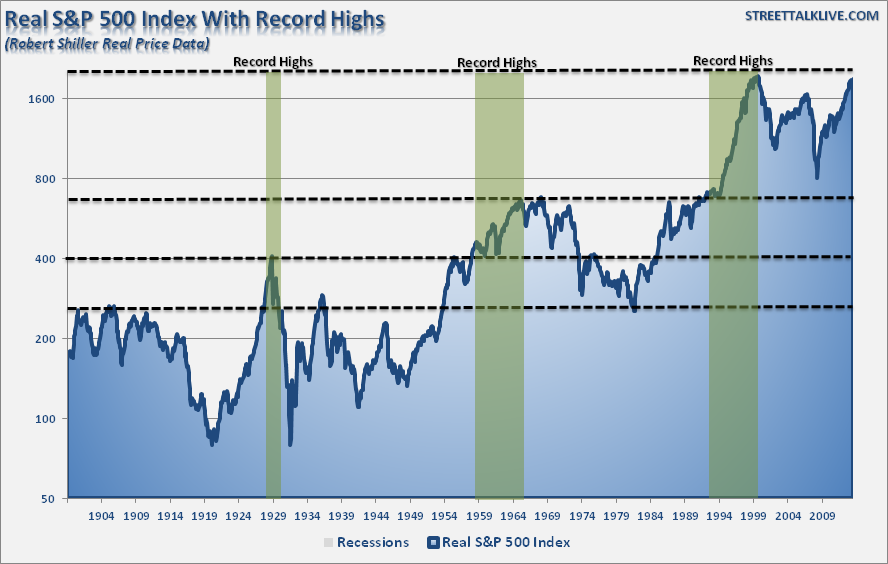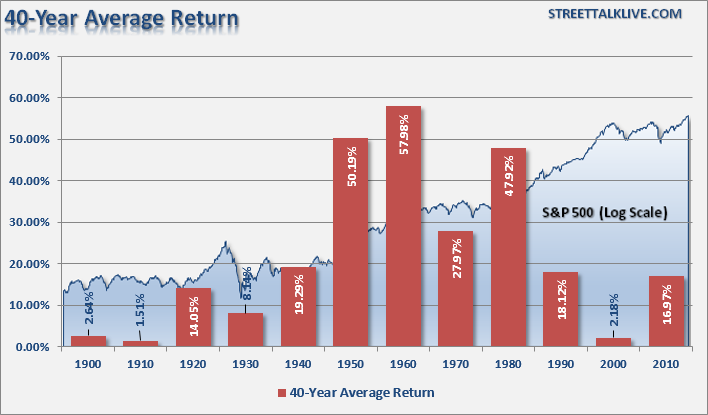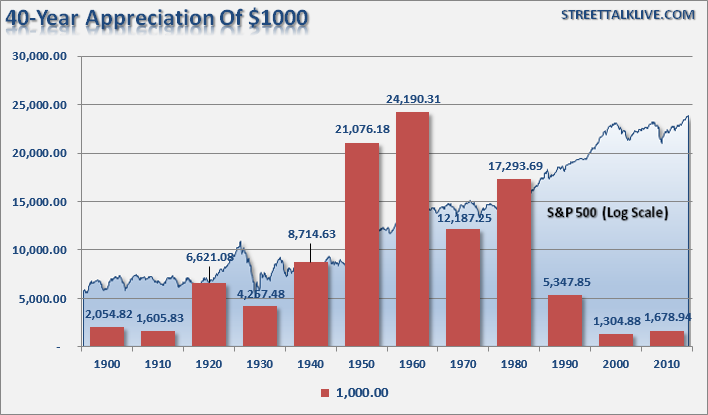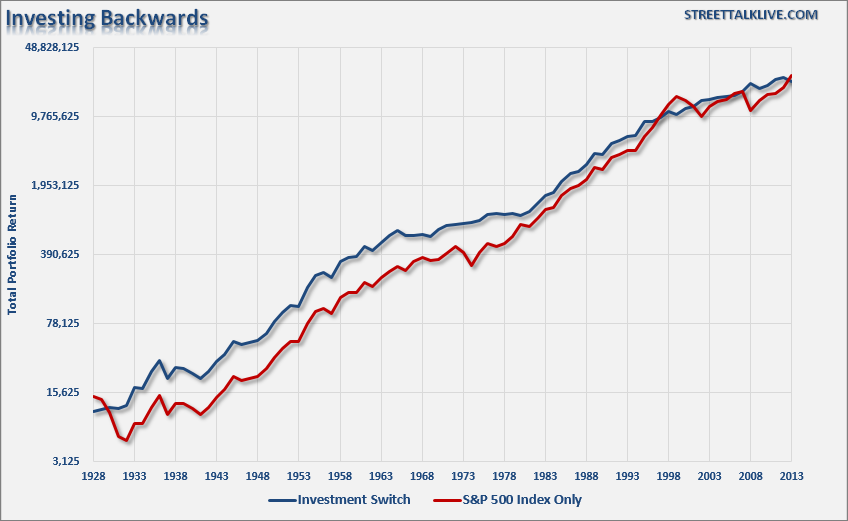During my morning routine of caffeine supported information injections, I ran across several articles that just contained generally bad investment advice and poorly formed analysis. Each argument was hinged on the belief that bull markets last indefinitely, bear markets are simply an opportunity to "buy" more, and investing for the long term always works.
This got me to thinking about the how we are told to invest in the markets. When markets are rising, and valuations are increasing, individuals are berated by financial media and Wall Street into shoving their hard earned "savings" into a rising risk environment. They are always told to "buy" but never to "sell." When markets invariably revert, they are told to "hold on," "average down," or "buy more." After all, you are investing for the long term, right? To wit:
"What young investors need most is long-term growth, not relatively stable values of assets they are unlikely to need for many decades. Fixed-income funds just get in the way of that growth.
Young investors — indeed anyone with a long investment horizon — should welcome bear markets as opportunities to buy more stock when it's 'on sale.' This isn't necessarily comfortable, but it's an important way to maximize the greatest asset that young people have: Time."
There are several problems with that statement. First, while markets have risen over time, the markets spend roughly 95% of their time making up for previous losses. The chart below shows this fairly clearly.
Secondly, exactly how much time do individuals really have? While it certainly sounds charming that "youngsters" are throwing their money into the Wall Street casino, the reality is that this is hardly the case. Youngsters rarely have sufficient levels of investible savings to actually invest. Between starting a career, raising a family and maintaining their specific standard of living there is rarely little remaining to be "saved." For most, it is not until the late 30's or early 40's that individuals are earning enough money to begin to save aggressively for retirement and have enough investible capital to actually make investing work for them after fees, expenses and taxes. Therefore, by the time most achieve a level of income and stability to begin actually saving and investing for retirement - they have, on average, about 40 years of investible time horizon before they expire.
I have prepared two different charts to show you the impact of investing over a 40 year time span. I used an initial investment of $1000 at the beginning of each decade and analyzed the capital appreciation for the ensuing 40 year period. In this regard, we can garner a clearer picture about the impact of both secular bull and bear market cycles on the total investment returns. [Note: The data below uses Shiller's price data on a nominal basis and is based on monthly capital appreciation only.]
The first chart shows the average annual return for each starting decade.
The next chart shows the capital appreciation of a $1000 initial investment.
Importantly, the major difference on the ending result depends greatly on "WHEN" you start investing. If you started investing during the 50's and 60's then you were lucky enough to capture the raging "bull market" of the 80's and 90's which offset the secular bear market of the 70's. However, if it started in 1990, so far, results haven't been all that great as the secular bear market of the 21st century has slowly chipped away at the gains of the 90's.
One very important thing to be noted here, which I have discussed in the past, is that valuations have been a key driver of these 40 year cycles. The best 40 year returns came from when the starting point in valuations were below 10x trailing reported earnings. Today, at over 20x trailing reported earnings (the only valuation measure that is historically consistent), it suggests that returns in the years ahead will likely be substandard.
What history tells us is that bullish exuberance always exists near market peaks while bearish despondency presides at market bottoms. While we are supposed to buyers of that despondency and sellers of the exuberance, history clearly shows that the opposite is in fact true.
So, what if we "invested backwards?" What would portfolio returns look like if stocks were bought when trailing valuations were at 7x earnings, or less, and then the portfolio was fully rotated into bonds whenever trailing valuations exceed 25x or more. While this is what we should do as investors, it is completely backwards to what is espoused in the mainstream media.
The chart below is a $10,000 investment invested into a switching strategy versus the total return S&P 500 index.
As you can see, the returns over the VERY long term investment horizon closely correlate with the total return of the S&P 500 without the downside volatility risk during major market reversions.
While this is an extreme example, and not something I would recommend, the point to be made is that the incessantly bullish commentary is not necessarily in your best interest due to the following:
1) You don't have 86 years to invest
2) The accumulation phase of portfolios is generally much shorter than the distribution phase, particularly now as average life expectancy creeps ever closer to 100.
3) As discussed recently, the returns actually received by investors are far lower due to inflation, taxes, and expenses.
4) Returns are diminished further due to investor behaviors such as "chasing returns" and "panic selling."
With forward returns likely to be lower and more volatile than what was witnessed in the 80-90's, the need for a more conservative allocation model is rising. Controlling risk, reducing emotional investment mistakes and limiting the destruction of investment capital will likely be the real formula for investment success in the decade ahead.




